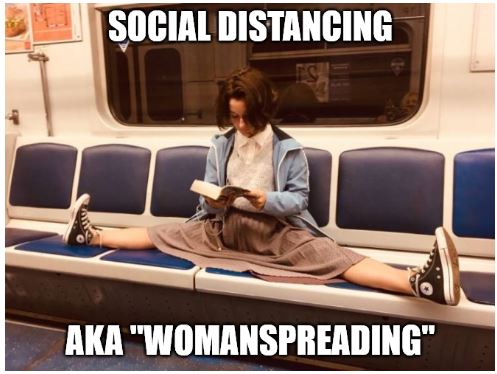If this happens as a result of the Chinkvirus lockdown, at least ONE good thing will have come out of it:
A new poll was released by RealClear Opinion Research the other day, indicating that the complaints we’ve been hearing about online schooling may not be as prevalent as we thought. When asked if they were “more or less likely to enroll your son or daughter in a homeschool, neighborhood homeschool co-op, or virtual school once the lockdowns are over,” 41 percent of parents said they were more likely. Only 31 percent were less likely to do so. That is an amazing increase in positivity, especially considering that only three percent of the population was homeschooled before the lockdown.
But there are some more surprising numbers from that poll. Homeschooling, it seems, is not something that more whites want to do to flex their privilege muscle. Only 36 percent of white parents said they were more likely to homeschool. For Hispanic parents that number was 38 percent, while Black and Asian parents were at 50 and 54 percent respectively.
Another jaw-dropping fact is that this trend is not partisan. Forty-six percent of Democrats said they are more likely to homeschool, while 42 percent of Republicans said the same.
Why?
The survey doesn’t make a lot of sense based on what we’re hearing in the media about how hard online education is, how children aren’t learning anything, and how parents are maxed out.
A few theories come to mind.
One is that parents have tried homeschooling. Some – not all, but some – see that even in such an uncertain time of cobbled together education, they can do it. If it can be done at a time like this, imagine how effective they could be with more preparation and a curriculum designed for true homeschooling, not one adapted from institutional schooling at the eleventh hour.
But there’s another possibility. Could parents have realized just how much time their children waste in traditional school? Another poll, from the Minneapolis Star Tribune, asked parents how much time their children spend on average each day on their school work. The most common answer was a mere three hours (see chart). This is less than half of the 6.28 hours the average student in Minnesota spends in each day of public schooling. It’s easy to see how parents could start to scratch their heads and imagine how much more their child could learn if not bound by the constraints which come from waiting for the whole class to move along.
The instruction topic which strikes fear into the hearts of prospective homeschoolers is mathematics, and it shouldn’t.
Here’s a stone-cold fact: do you know how long it takes for a child of moderate intelligence to learn high-school math, up to college-level algebra? One year.
One year’s instruction, properly taught to a child who is prepared to learn it, or is motivated to learn it.
And if all other learning is delayed while the math is being taught, that year falls to four months.
Here are the caveats.
Learning occurs under two (and only two) sets of circumstances: love, and fear. (Love of the topic, and fear of the consequences of not learning it.) Absent those circumstances, no learning will take place and you’d have about the same success in teaching your dog calculus.
So if you’re not sure of your own ability in math, hire a tutor for Junior and Girl-child.
The only other thing you need to teach your kids before they leave home is literacy: how to read, and how to write. They are the easiest things in the world to teach, as long as you yourself are even slightly literate. (If not, see “tutor” above.) Literacy is not only the sine qua non of a successful life, but illiteracy spells absolute doom in a civilized society.
The secret of all children is simple: they have an innate desire to learn about the world about them. They are, quite simply, sponges and the learning not only occurs naturally, it accelerates as they get older. The only reasons it won’t accelerate are distraction (videogames etc.), and boredom (e.g. a high-school classroom).
That said, there is one small problem that we as a society are unwilling to admit: some children — and adults, actually — are incapable of learning. Quite simply, their learning takes place up to a point, and then stops completely, usually at about sixth-grade level. And here’s the inescapable fact related to this problem: these people are not suited for college — they are not even suited for a proper high school, for that matter — and their futures depend on fostering other skills. (TV Chef Jamie Oliver is an example: he’s severely dyslexic, even today, so he made a career in a field in which reading was not critical. His example is but one of hundreds of thousands, perhaps even millions.)
The only other prerequisite for education is quite simple: discipline. It’s the discipline of knowing that some things must be learned (e.g. simple multiplication- or division tables, or the alphabet), and that there are consequences for not learning them. The joy of homeschooling, by the way, is being in charge of deciding what those things are, for each child (because each will be different), and what the consequences of failure are.
And I would suggest that such discipline is created far more easily at home — as it has been for literally centuries — than at a public education facility. Furthermore (and this is the difficult bit), the discipline has to start with the teacher (i.e. the parents).
We all know that children require structure in their lives — it’s such a truism I’m not even going to bother to defend it — so any homeschooling requires planning, and a great deal of it. Educators need to establish clear goals for their children, but that doesn’t mean timetables. If you plan on your kids being able to read and understand Silas Marner , Lord Of The Flies or Catch-22 by age sixteen, for example, know up front that they may accomplish that before that time, or after. It doesn’t matter. (Educational goals are like a budget: they’re an advisory plan, not a rigid timetable.)
All the evidence is there: as a group, homeschooled kids are better prepared for college, have lower dropout rates and achieve higher grades than their state-educated peers. It’s not even close.
If, however, you’re too lazy or too fearful or too busy or feel too inadequate to do this for your children, by all means send them back to public school, where their futures will be decided by government-decided regulation and curricula, and shaped by indifferent civil servants who owe their tenure more to union influence than their own abilities.
As Professor Glenn Reynolds has put it (and I paraphrase): sending your children to public schools could quite justifiably be termed child abuse.
The caveats: not all teachers are uncaring drones, not all public schools are more akin to prisons than education establishments, not all student populations are feral jungles, and not all government regulations and curricula are absolute shit.
As any bookie will tell you, however, that’s not the way to bet.

















